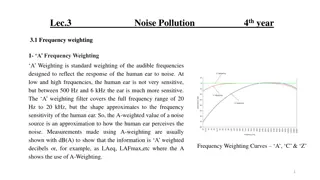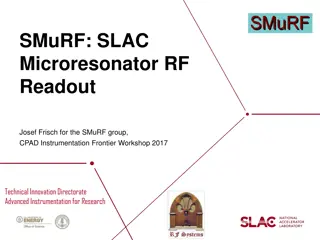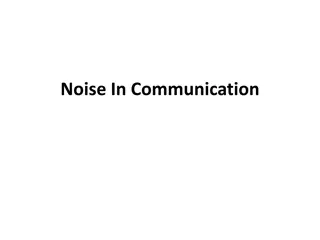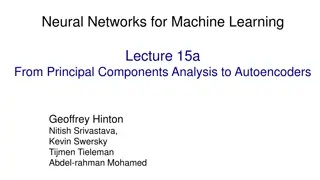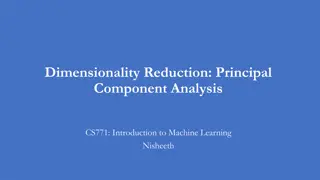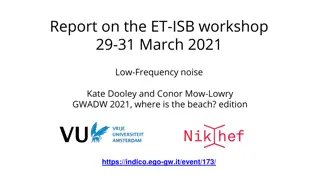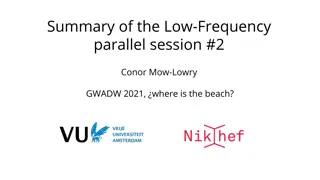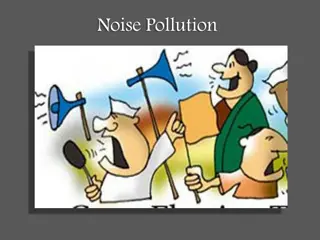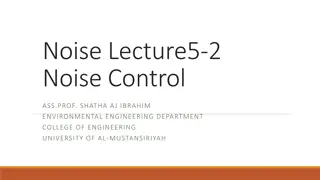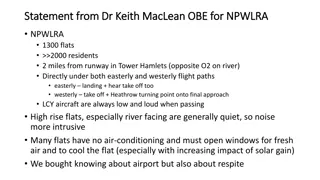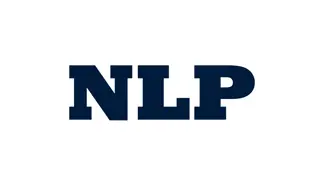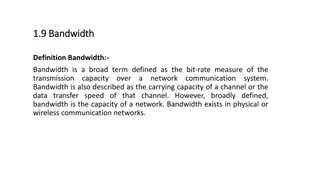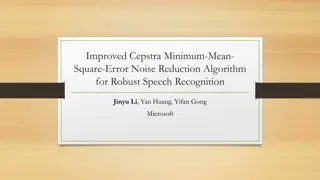Approximately Learning: Noise, Model Selection, Dimensionality Reduction
In Module II, explore Probably Approximately Learning (PAC), Noise, Model Selection, and Generalization. Understand the impact of noise on data, the sources of noise, and how noise affects learning outcomes. Discover methods like Principal Component Analysis and subset selection to address noise in machine learning models. Learn how noise distorts data, leading to the need for more complex hypotheses and computing resources. Gain insights into handling noise in binary classification problems to improve model performance.
Download Presentation

Please find below an Image/Link to download the presentation.
The content on the website is provided AS IS for your information and personal use only. It may not be sold, licensed, or shared on other websites without obtaining consent from the author.If you encounter any issues during the download, it is possible that the publisher has removed the file from their server.
You are allowed to download the files provided on this website for personal or commercial use, subject to the condition that they are used lawfully. All files are the property of their respective owners.
The content on the website is provided AS IS for your information and personal use only. It may not be sold, licensed, or shared on other websites without obtaining consent from the author.
E N D
Presentation Transcript
Module II Probably Approximately Learning (PAC) Noise Learning Multiple classes, Model Selection and Generalization, Dimensionality reduction- Subset selection, Principle Component Analysis
Noise- Noise and their sources Noise is any unwanted anomaly in the data . Noise may arise due to several factors: 1. There may be imprecision in recording the input attributes, which may shift the data points in the input space. 2. There may be errors in labeling the data points, which may re-label positive instances as negative and vice versa. This is sometimes called teacher noise.
Noise- Noise and their sources 3. There may be additional attributes, which we have not taken into account, that affect the label of an instance. Such attributes may be hidden or latent in that they may be unobservable. The effect of these neglected attributes is thus modeled as a random component and is included in noise.
Effect of noise Noise distorts data. When there is noise in data, learning problems may not produce accurate results. Simple hypotheses may not be sufficient to explain the data and so complicated hypotheses may have to be formulated. This leads to the use of additional computing resources and the needless wastage of such resources.
Effect of noise In a binary classification problem with two variables, when there is noise, there may not be a simple boundary between the positive and negative instances and to separate them A rectangle can be defined by four numbers, but to define a more complicated shape one needs a more complex model with a much larger number of parameters. When there is noise Make a complex model which makes a perfect fit to the data and attain zero error Use a simple model and allow some error.
Effect of noise Simple model to use Easy to check whether a point is inside or outside a rectangle Simple model to train and has fewer parameters Easier to find corner values of a rectangle With a small training set when the training instances differ a little bit; we expect the simpler model to change less than a complex model less variance A simpler model has more bias Finding the optimal model corresponds to minimizing both the bias and the variance
Effect of noise Simple model to explain Rectangle corresponds to defining intervals on the two attributes Given comparable empirical error, a simple model would generalize better than a complex model Occam s razor Simpler explanations are more plausible and unnecessary complexity should be shaved off
Learning multiple classes More than two classes. Example Instances of three classes, family car, sports car, luxury sedan
Learning multiple classes Two methods are used to handle such cases. one-against-all" and one-against-one .
One-against all method Consider the case where there are K classes denoted by C1, . . . , CK. Each input instance belongs to exactly one of them. View a K-class classification problem as K two-class problems. In the i-th two-class problem, the training examples belonging to Ciare taken as the positive examples and the examples of all other classes are taken as the negative examples.
One-against all method Find K hypotheses h1, . . . , hKwhere hiis defined by hi(x) = 1 if x is in class Ci 0 otherwise For a given x, ideally only one of hi(x) is 1 and then we assign the class Cito x. But, when no, or, two or more, hi(x) is 1, we cannot choose a class. In such a case, we say that the classifier rejects such cases.
One-against all method The total empirical error takes the sum over the predictions for all classes over all instances E ({hi}i=1K /X) = t=1 N i=1 K 1 (hi (xt) rit) For a given x, ideally only one of hi(x) , i=1...K is 1 Build two hypothesis One for positive and other for negative instances E.g. Separate family cars from sports car For luxury sedan, we can have both hypotheses decide negative and reject the input
One-against-one method In the one-against-one (OAO) (also called one-vs-one (OVO)) strategy, a classifier is constructed for each pair of classes. If there are K different class labels, a total of K(K 1)/2 classifiers are constructed. An unknown instance is classified with the class getting the most votes. Ties are broken arbitrarily.
One-against-one method For example, let there be three classes, A, B and C. In the OVO method we construct 3(3 1)/2 = 3 binary classifiers. Now, if any x is to be classified, we apply each of the three classifiers to x. Let the three classifiers assign the classes B, B, A respectively to x. Since a label to x is assigned by the majority voting, in this example, we assign the class label of B to x.
Model selection Learning a boolean function All inputs and outputs are binary 2dpossible ways to write d binary values Training set has at most 2dsamples with d inputs Each can be labelled as 0 or 1 2(2d)possible boolean functions of d inputs Distinct training samples can remove hypotheses
Example x1 0 0 1 1 x2 0 1 0 1 h1 0 0 0 0 h2 h3 0 0 0 1 h4 0 0 1 1 h5 0 1 0 0 h6 0 1 0 1 h7 0 1 1 0 h8 0 1 1 1 h9 1 0 0 0 h10 1 0 0 1 0 0 1 0 h11 1 0 1 0 h12 1 0 1 1 h13 1 1 0 0 h14 1 1 0 1 h15 1 1 1 0 h16 1 1 1 1
Model selection Start with all possible hypotheses and as we see more training examples, we remove those hypotheses that are not consistent with the training data In case of boolean functions, to end up with a single hypothesis we need to see all 2d training examples If training set is a subset of instance space solution is not unique
ILL-POSED PROBLEM After N samples , there remain 2(2d-N) possible functions Data itself is not sufficient to find a unique solution See more training samples. Know more about underlying function Carve out more hypotheses that are inconsistent from the hypotheses classes Still left with many consistent hypotheses
Model selection In order to formulate a hypothesis for a problem, we have to choose some model and the term model selection has been used to refer to the process of choosing a model. It has been used to indicates the process of choosing one particular approach from among several different approaches.
Inductive bias In a learning problem we only have the data. But data by itself is not sufficient to find the solution. We should make some extra assumptions to have a solution with the data we have. The set of assumptions we make to have learning possible is called the inductive bias of the learning algorithm. One way we introduce inductive bias is when we assume a hypothesis class.
Examples 1. In learning the class of family car, there are infinitely many ways of separating the positive examples from the negative examples. Assuming the shape of a rectangle is an inductive bias. 2. In regression, assuming a linear function is an inductive bias. The model selection is about choosing the right inductive bias
Advantages of a simple model Even though a complex model may not be making any errors in prediction, there are certain advantages in using a simple model. 1. A simple model is easy to use. 2. A simple model is easy to train. It is likely to have fewer parameters. It is easier to find the corner values of a rectangle than the control points of an arbitrary shape. 3. A simple model is easy to explain. 4. A simple model would generalize better than a complex model. This principle is known as Occam s razor, which states that simpler explanations are more plausible and any unnecessary complexity should be shaved off.
Remarks A model should not be too simple! A too simple model assumes more, is more rigid, and may fail if indeed the underlying class is not that simple. A simpler model has more bias. Finding the optimal model corresponds to minimizing both the bias and the variance.
Model selection Choosing an appropriate algorithms from a selection of possible algorithms, or choosing the sets of features to be used for input, or choosing initial values for certain parameters. The process of picking a particular mathematical model from among different mathematical models which all purport to describe the same data set. The process of choosing the right inductive bias.
Generalisation How well a model trained on the training set predicts the right output for new instances is called generalization. How well the concepts learned by a machine learning model apply to specific examples not seen by the model when it was learning. The goal of a good machine learning model is to generalize well from the training data to any data from the problem domain. This allows us to make predictions in the future on data the model has never seen.
Generalisation Overfitting and underfitting are the two biggest causes for poor performance of machine learning algorithms. The model should be selected having the best generalisation and avoid overfitting and underfitting
Underfitting Underfitting is the production of a machine learning model that is not complex enough relationships between a dataset features and a target variable. to accurately capture Hypothesis representing data class H is less complexity than function Try to fit a line to data sampled from a third-order polynomial ax3+bx2+cx+d=0 As complexity increases training error decreases
Overfitting Overfitting is the production of an analysis which corresponds too closely or exactly to a particular set of data, and may therefore fail to fit additional data or predict future observations reliably. Corresponds too closely to the given dataset and hence it does not account for small random noises in the dataset Fitting a sixth order polynomial to noisy data sampled from a third-order polynomial
Example Suppose we have to determine the classification boundary for a dataset two class labels. The curved line is the classification boundary. The three figures illustrate the cases of underfitting, right fitting and overfitting.
Triple trade-off In all learning algorithms that are trained from example data, there is a trade-off between three factors: the complexity of the hypothesis we fit to data, namely, the capacity of the hypothesis class, the amount of training data, and the generalization error on new examples.
Triple trade-off As the amount of training data increases, the generalization error decreases. As the complexity of the model class H increases, the generalization error decreases first and then starts to increase. The generalization error of an overcomplex H can be kept in check by increasing the amount of training data but only up to a point.
Testing generalisation: Cross-validation We can measure the generalization ability of a hypothesis, namely, the quality of its inductive bias, if we have access to data outside the training set. We simulate this by dividing the training set we have into two parts.
Testing generalisation: Cross-validation We use one part for training (that is, to find a hypothesis), and the remaining part is called the validation set and is used to test the generalization ability. Assuming large enough training and validation sets, the hypothesis that is the most accurate on the validation set is the best one (the one that has the best inductive bias). This process is called cross-validation.
Test set Also called the publication set Containing examples not used in training or validation. An analogy from our lives is when we are taking a course: The example problems that the instructor solves in class while teaching a subject form the training set; Exam questions are the validation set; The problems we solve in our later, professional life are the test set.
Training- Validation split We cannot keep on using the same training/validation split either, because after having been used once, the validation set effectively becomes part of training data. This will be like an instructor who uses the same exam questions every year; a smart student will figure out not to bother with the lectures and will only memorize the answers to those questions
Training- Validation split The training data we use is a random sample For the same application, if we collect data once more, we will get a slightly different dataset, the fitted h will be slightly different and will have a slightly different validation error. If we have a fixed set which we divide for training, validation, and test, we will have different errors depending on how we do the division. These slight differences in error will allow us to estimate how large differences should be to be considered significant and not due to chance.
VC dimension and PAC learning Measure of the capacity (complexity, expressive power, flexibility) of a space of functions that can be learned by a classification algorithm. Defined by Vladimir Vapnik and Alexey Chervonenkis Probably approximate correct (PAC) is a framework for the mathematical analysis of learning algorithms. The goal is to check whether the probability for a selected hypothesis to be approximately correct is very high.
Vapnik-Chervonenkis dimension Let H be the hypothesis space for some machine learning problem. The Vapnik-Chervonenkis dimension of H, also called the VC dimension of H, and denoted by VC(H), is a measure of the complexity (or, capacity, expressive power, richness, or flexibility) of the space H. To define the VC dimension we require the notion of the shattering of a set of instances.
Vapnik-Chervonenkis dimension A dataset containing N points can be labeled in 2Nways as positive and negative. Therefore, 2N different learning problems can be defined by N data points. If for any of these problems, we can find a hypothesis h H that separates the positive examples from the negative, then we say H shatters N points. Any learning problem definable by N examples can be learned with no error by a hypothesis drawn from H. The maximum number of points that can be shattered by H is called the VC dimension of H, is denoted as VC(H), and measures the capacity of H.
Shattering of a set Let D be a dataset containing N examples for a binary classification problem with class labels 0 and 1. Let H be a hypothesis space for the problem. Each hypothesis h in H partitions D into two disjoint subsets as follows: {x D h(x) = 0} and {x D h(x) = 1}. Such a partition of S is called a dichotomy in D.
Shattering of a set There are 2Npossible dichotomies in D. To each dichotomy of D there is a unique assignment of the labels 1 and 0 to the elements of D. Conversely, if S is any subset of D then, S defines a unique hypothesis h as follows: h(x) = 1 if x S 0 otherwise
Shattering of a set To specify a hypothesis h, we need only specify the set {x D h(x) = 1}. All possible dichotomies of D if D has three elements, with only one of the two sets in a dichotomy, namely the set {x D h(x) = 1}.
Definition A set of examples D is said to be shattered by a hypothesis space H if and only if for every dichotomy of D there exists some hypothesis in H consistent with the dichotomy of D.
Vapnik-Chervonenkis dimension Example Let the instance space X be the set of all real numbers. Consider the hypothesis space defined by H = {hm m is a real number}, where hm IF x m THEN 1 ELSE 0 .



